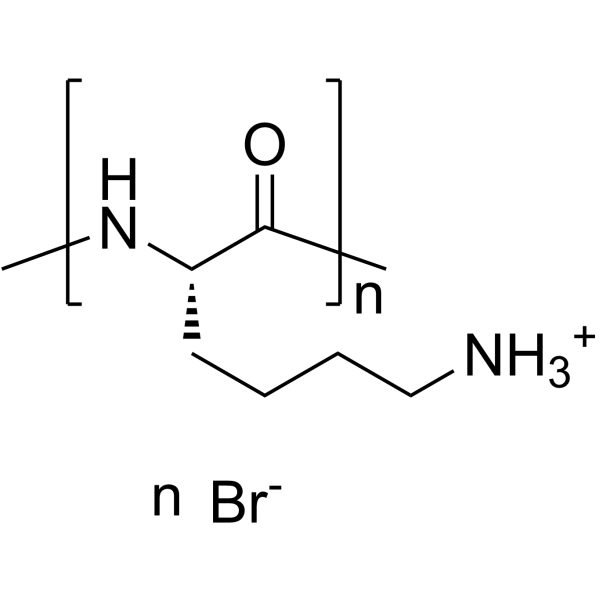Poly-L-lysine hydrobromide

Poly-L-lysine hydrobromide structure
|
Common Name | Poly-L-lysine hydrobromide | ||
|---|---|---|---|---|
| CAS Number | 25988-63-0 | Molecular Weight | 227.09900 | |
| Density | 1.156g/cm3 | Boiling Point | 745.4ºC at 760mmHg | |
| Molecular Formula | (C6H14N2O2)n.nBrH | Melting Point | N/A | |
| MSDS | Chinese USA | Flash Point | 404.6ºC | |
Use of Poly-L-lysine hydrobromidePoly-L-lysine (hydrochloride) is a water-soluble synthetic polypeptide[1]. |
| Name | poly(L-lysine) hydrobromide |
|---|---|
| Synonym | More Synonyms |
| Description | Poly-L-lysine (hydrochloride) is a water-soluble synthetic polypeptide[1]. |
|---|---|
| Related Catalog | |
| References |
| Density | 1.156g/cm3 |
|---|---|
| Boiling Point | 745.4ºC at 760mmHg |
| Molecular Formula | (C6H14N2O2)n.nBrH |
| Molecular Weight | 227.09900 |
| Flash Point | 404.6ºC |
| Exact Mass | 226.03200 |
| PSA | 89.34000 |
| LogP | 1.88600 |
| Vapour Pressure | 1.24E-05mmHg at 25°C |
| Storage condition | 2-8°C |
| Stability | Stable. Incompatible with strong acids, strong bases. |
| Personal Protective Equipment | Eyeshields;Gloves;type N95 (US);type P1 (EN143) respirator filter |
|---|---|
| RIDADR | NONH for all modes of transport |
| WGK Germany | 3 |
|
Receptor for Advanced Glycation End-Products Signaling Interferes with the Vascular Smooth Muscle Cell Contractile Phenotype and Function.
PLoS ONE 10 , e0128881, (2015) Increased blood glucose concentrations promote reactions between glucose and proteins to form advanced glycation end-products (AGE). Circulating AGE in the blood plasma can activate the receptor for a... |
|
|
The Parkinson's disease protein LRRK2 impairs proteasome substrate clearance without affecting proteasome catalytic activity.
Cell Death Dis. 2 , e196, (2011) Leucine-rich repeat kinase 2 (LRRK2) mutations are the most common known cause of Parkinson's disease (PD). The clinical features of LRRK2 PD are indistinguishable from idiopathic PD, with accumulatio... |
|
|
Astrocyte-derived tissue transglutaminase interacts with fibronectin: a role in astrocyte adhesion and migration?
PLoS ONE 6(9) , e25037, (2011) An important neuropathological feature of neuroinflammatory processes that occur during e.g. Multiple Sclerosis (MS) is the formation of an astroglial scar. Astroglial scar formation is facilitated by... |
| POLY-L-LYSINE |
| PDL Solution |
| POLY-L-LYSINE 70 000 HBR |
| POLY(LYS).HBR |
| Polylysine hydrobromide |
| POLY-L-LYSINE HYDROBROMIDE |
| PDL HBr |
| L-LYS-(L-LYS)N-L-LYS XHBR |
| Poly-L-lysine |
| Poly-L-lysine hydrobromide |
| L-Lysine homopolymer hydrobromide |
| POLY-L-LYSINE HYDROBROMIDE >300'000 |
| L-Lysine homopolymer |

